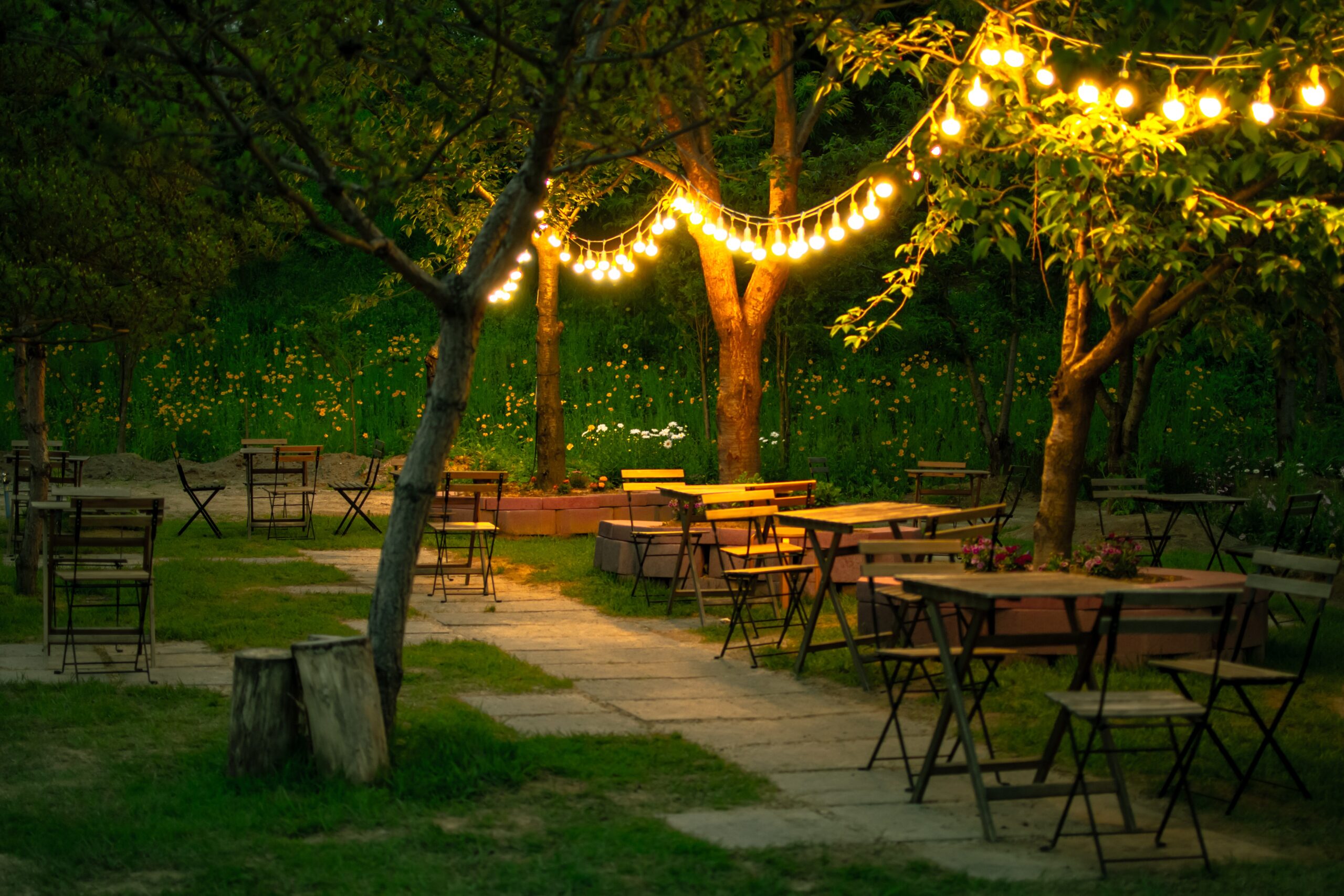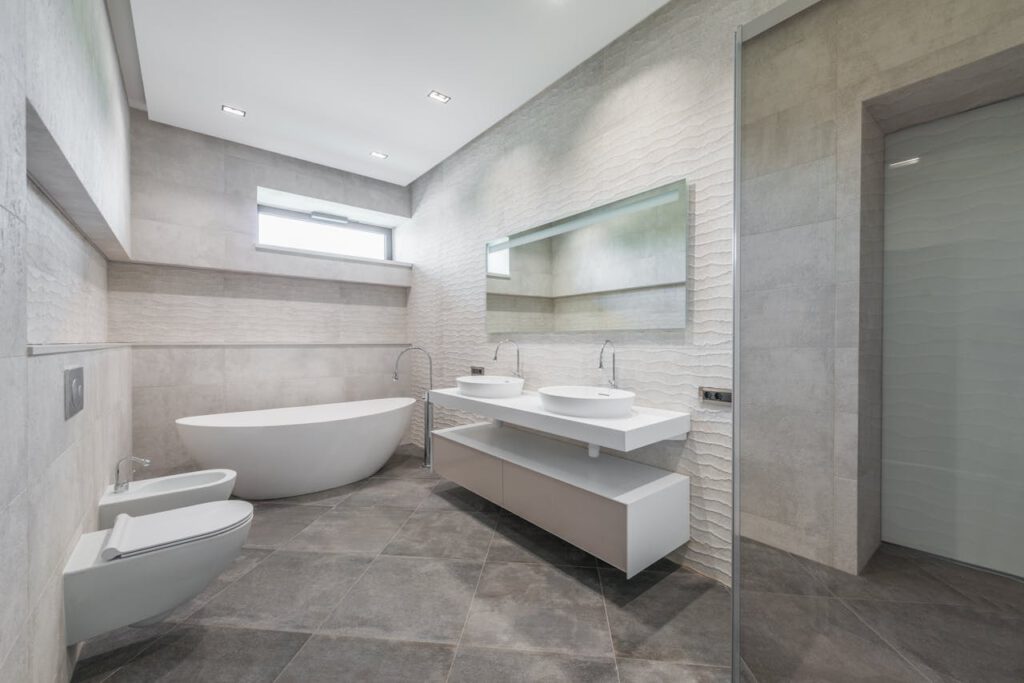The benefits of outdoor lighting are a dime-a-dozen, but choosing the right fixtures isn’t so simple.
Why? Because some light fixtures and intensities aren’t great for your garden. Plus, knowing where to anchor your light fixtures is another headache in itself.
So, what should you do?
Don’t worry! We’re here to light your way. But before getting into the actual how and what of your lighting plan, let’s check out the types of light fixtures that you could use and where you could place them.
Types of Outdoor Lighting
They are several kinds of outdoor light fixtures you could use to illuminate your garden. Let’s take a look at them.
1. Wall-Mounted Fixtures
Wall-mounted fixtures say “hello” to your guests when they arrive, highlight the texture of your house’s siding, and help you unlock your door without needing to fish around for the keyhole.
These fixtures work best when placed above shoulder height (about 5.5 to 6 feet above the ground) because if they’re fixed lower, they may leave you seeing stars.
2. Post Lights
Post lights shine in all directions, so they’re great for lighting long driveways and other expansive areas. You can even put them on top of a brick or stone column in your garden, allowing the ambient glow to light the trees or bushes behind or in front of it.
3. Landscape Lighting
Landscape lighting is excellent for illuminating everything in your garden, whether steps, stone, trees, or bushes. It has three types:
Path and Spread Lights – They light up sidewalks, lawn walkways, and stone pathways, as well as lend a hint of mystique to your plants and boulders.
Accent Lights – They focus on walls, specific trees or plants, and exotic features in your garden. These lights include downlights, uplights, in-ground lights, etc.
Hardscape Lights – They illuminate decks, walkways, steps, and stone walls, highlighting the texture of the structures.
4. Wall Lights
If you’re a fan of outdoor dining, wall lights—especially gorgeous sconces—should be on top of your list. They can illuminate your patio or porch and provide enough light to eat or dance by. Wall lights are also a great choice if you’re looking to enhance the style of your home.
What Does Your Home Look Like?
Now that we know what kind of lights you could use, ask yourself the following questions:
-What does your home look like?
-Is your house modern or traditional? Does it have any defining characteristics, such as stucco on the walls or a turret?
-What colors make up your siding, roofing, and stonework?
-How far away is your garden from the main house?
What your house looks like on the outside is crucial to your garden lighting plan. Why? Because your house’s color scheme and style define the placement and selection of lighting fixtures.
For instance, if your house is done in beige, earth tones, or red brickwork, lighting fixtures with chrome or zinc finishes won’t work for you. Instead, you’ll have to go with brass, copper, or bronze fixtures.
Similarly, if your house is done in modern grey or black tones, light fixtures with white, chrome, pewter, or nickel finishes will work best for you.
Now that we’ve established the importance of your home’s color scheme and style, let’s look at things you have to consider when selecting outdoor lighting for your home.
Types of Light Ratings
Outdoor lighting fixtures are made from materials and have finishes that can withstand climate changes, such as acid rain, hail or dust storms, etc. They’re usually certified by the following product safety organizations:
-Intertek (ETL)
-Underwriters Laboratories (UL)
-CSA International.
These organizations divide outdoor lighting fixtures into two categories:
Damp – These fixtures work great in covered areas like sheds and patios. They can’t withstand water exposure, making them fantastic for places like Nevada and California.
Wet – These fixtures can survive rainfall events or the constant moisture in coastal areas without fizzling out. They’re great for cities like Atlanta and New York.
So, when you’re selecting lighting fixtures for your garden, take your climate into account. Does it rain all the time in your backyard? Or is it sunny all year? Your choices will determine the length of time your lighting fixture survives.
LEDs vs. Incandescent Lights
LEDs are your best friend when lighting your garden because they:
-Need almost zero maintenance
-Have a long life (about ten years)
-Use less electricity
-Function well in extremely cold or hot climates.
In fact, LEDs are so efficient that they can produce more than 1700 lumens of light while only consuming 14 to 20 watts. That’s almost one-fifth of the power consumption of an incandescent bulb!
Plus, LEDs attract fewer bugs because they produce less heat and UV light—a life-saver if you’re eating BBQ or taking a walk at night.
How Many Lumens Do You Need for Outdoor Lighting?
It depends on the type of light you’re using, but generally, you need around 12 to 1,300 lumens for outdoor lighting.
Here’s a list to make your outdoor lighting journey easier:
Step Lights – About 100 lumens are enough to banish shadows from every step.
Path Lights – Usually, 90 to 100 lumens are good enough to let you see where you’re going without compromising your night vision.
Floodlights – They work best at 500 to 700 lumens—good enough to let you see everything.
Wall Lights – Since they’re typically used to accent textures, these lights work best between 50 to 185 lumens.
Landscape Lights – As you want to see where you’re going, landscape lights work best at 50 to 300 lumens.
3 Tips for Making Your Outdoor Lighting Journey Easier
Now that we’ve looked over light fixtures, lumens, and LEDs, let’s figure out how you can make your life easier while illuminating your garden as much as possible!
1. Determine If You’re Renovating or Remodeling
This may seem like a weird tip until you find yourself short a few thousand dollars and the proud new owner of a mansion-worthy garden.
So, before starting your outdoor lighting journey, create a chart with the heading “renovation vs. remodeling” and decide which one you’re going for. Choosing between the two will make it easier for you to put a stop to too-expensive purchases.
2. Mix Up Textures
While you shouldn’t mix finishes, textures are a free game. You could pair shiny fixtures with matt walls or use an etched Linford wall light to brighten the texture of your entryway. You do you.
3. Match a Trait or Two
It’s easy to go overboard when selecting light fixtures for your outdoor wall and garden, but an easy way to avoid that is to make sure you match one trait, such as a style, color, finish, or color. That’ll keep your entryway and steps from looking unfocused.
The Takeaway
Outdoor wall lighting can bring landscapes and facades to life. But understanding how to use lights and shadows to highlight outdoor features can make the difference between a simple outdoor space and one perfect for parties or long walks.
So, if you’re thinking about highlighting your home’s outdoor architectural features like brickwork columns or stone walkways while drawing attention to trees and plants in your garden, scroll back up, give this guide a reread, and get to work.
But if you have a backyard garden in your Brooklyn home that you don’t know what to do with, find a professional who has performed an exterior or interior renovation in NYC. They’ll help you make your outdoor space a party magnet.

